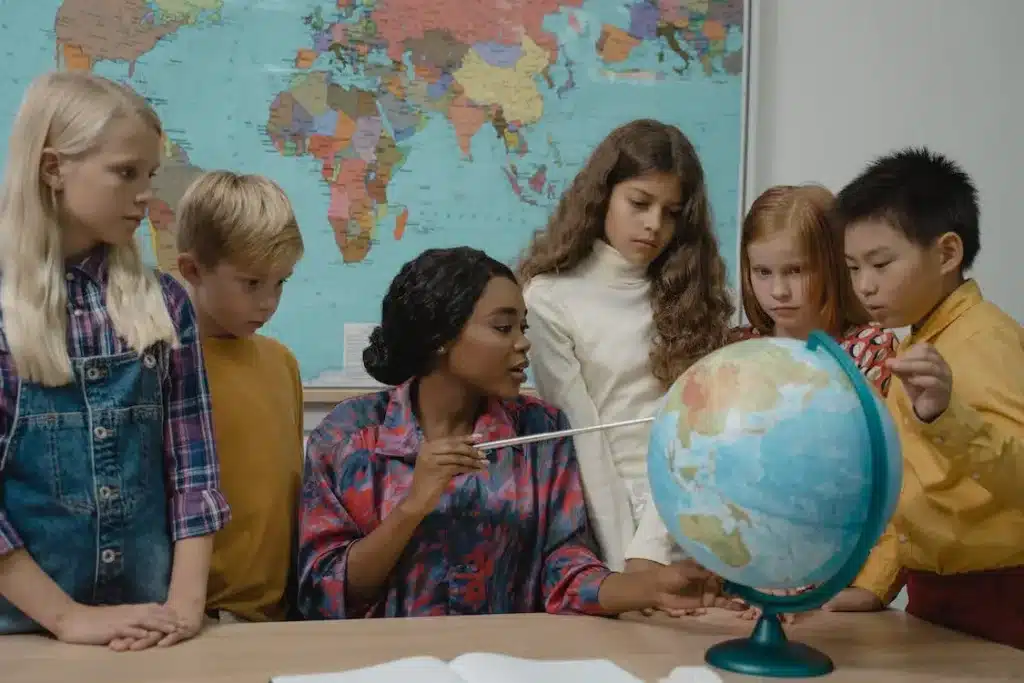Engaging Young Minds in The U.S.
Engaging Young Minds in The U.S. Geography: The Power of Worksheets
Geography is an essential part of education, offering children a window into the vast and varied landscapes of the United States. However, teaching this subject effectively to young learners can be challenging.
Motivating kids and making them interested in geography is not an easy task, especially when access to interactive tools is limited. One way to increase engagement is to use U.S. Geography worksheets, which can also help young learners develop other skills (while making lessons easier for teachers). This article explores the role of worksheets in making the study of U.S. geography both engaging and educational for children.
The Importance of Geography in Education
Understanding geography is crucial for developing a sense of place and identity. It helps children appreciate the diversity of landscapes and cultures within the U.S. and fosters a sense of respect for the environment. Moreover, geography education lays the foundation for critical thinking skills by helping children understand spatial relationships and geographic concepts.
Challenges in Teaching Geography
One of the main challenges in teaching geography is keeping children engaged. Young learners often find it difficult to relate to places they haven’t visited or seen. Additionally, geography can sometimes be perceived as a mere memorization of states, capitals, and landforms, which can be tedious for students. To make geography classes more captivating, teachers need to invest a lot of time and effort, which is rarely possible in their busy academic lives.
The Role of Worksheets in Geography Education
Worksheets are a versatile tool in the geography classroom. They can be designed to cater to different learning styles and can make abstract concepts more concrete. These materials can include maps, puzzles, coloring activities, and interactive quizzes, which can make the learning process more dynamic and engaging.
Making Learning Fun and Interactive
Interactive worksheets that involve coloring, drawing, or labeling maps can make learning about geography fun. For example, children can color states based on different climates or label them according to their geographic features. Such activities not only keep students engaged but also help them remember information better.
Facilitating Hands-On Learning
Worksheets can also include cut-and-paste activities where children can arrange states or landmarks on a blank map. This hands-on approach reinforces their understanding of the location and shape of different geographical features. The method is a perfect solution for active kids or kinesthetic learners who need some sort of movement to learn better.
Encouraging Critical Thinking
Geography worksheets can be designed to encourage critical thinking. Activities like comparing the sizes of different states, understanding time zones, or identifying the geographical advantages of certain locations help children develop analytical skills.
Personalizing Learning
Worksheets can be tailored to the individual needs of students. For children who are more advanced, these materials can include more challenging tasks like research-based questions or complex map analyses. This ensures that every child’s learning needs are met.
Integrating Technology with Worksheets
The integration of technology with traditional handouts can enhance the learning experience. Digital worksheets can include interactive elements like clickable maps, online scavenger hunts, and virtual field trips. This not only makes learning more exciting but also familiarizes children with digital tools.
Tips for Creating Effective Geography Worksheets
- Incorporate Visual Elements: This subject calls for the use of different illustrations, so implementing them in your handouts is very practical. Maps, pictures, and infographics make worksheets more appealing and help in visual learning.
- Include a Variety of Activities: Diversifying the types of activities keeps children interested and caters to different learning styles.
- Connect to Real Life: Relating geographical concepts to real-life scenarios helps children understand the relevance of what they are learning.
- Ensure Age-Appropriateness: The content and complexity of the worksheets should be suitable for the age group of the students.
- Promote Collaborative Learning: Worksheets that encourage group activities can enhance social skills and collaborative learning.
Conclusion
Worksheets are a powerful tool in the geography classroom. They can transform the learning experience from a monotonous memorization exercise to an engaging, interactive, and enjoyable process.
By carefully designing worksheets that cater to various learning styles and integrating them with technology, educators can significantly enhance the effectiveness of geography education for young learners. This approach not only fosters a deeper understanding of U.S. geography but also instills a lifelong interest in the subject.




